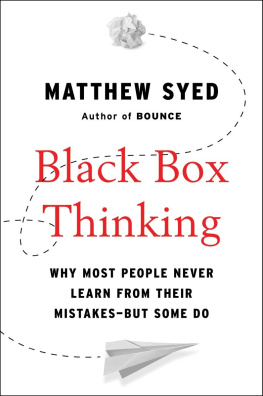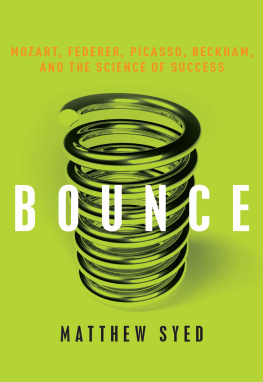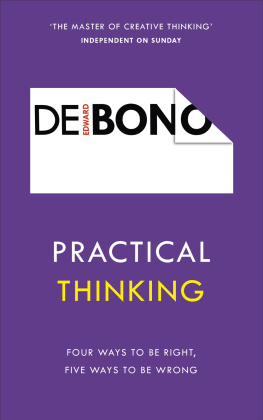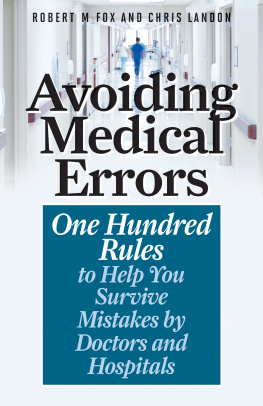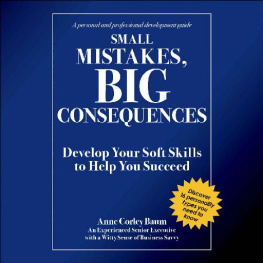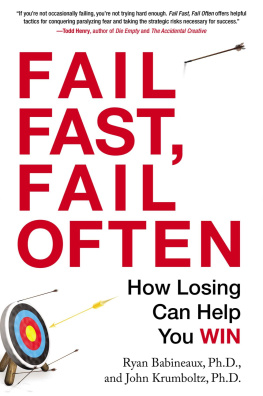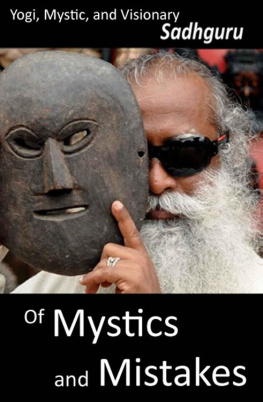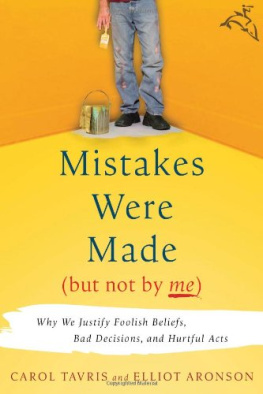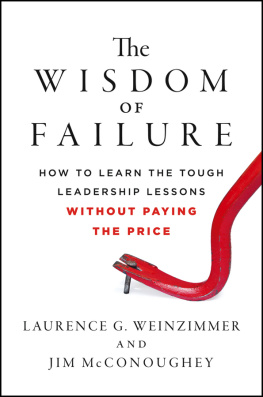Matthew Syed - Black Box Thinking: Why Most People Never Learn from Their Mistakes--But Some Do
Here you can read online Matthew Syed - Black Box Thinking: Why Most People Never Learn from Their Mistakes--But Some Do full text of the book (entire story) in english for free. Download pdf and epub, get meaning, cover and reviews about this ebook. year: 2015, publisher: Portfolio, genre: Religion. Description of the work, (preface) as well as reviews are available. Best literature library LitArk.com created for fans of good reading and offers a wide selection of genres:
Romance novel
Science fiction
Adventure
Detective
Science
History
Home and family
Prose
Art
Politics
Computer
Non-fiction
Religion
Business
Children
Humor
Choose a favorite category and find really read worthwhile books. Enjoy immersion in the world of imagination, feel the emotions of the characters or learn something new for yourself, make an fascinating discovery.
- Book:Black Box Thinking: Why Most People Never Learn from Their Mistakes--But Some Do
- Author:
- Publisher:Portfolio
- Genre:
- Year:2015
- Rating:3 / 5
- Favourites:Add to favourites
- Your mark:
Black Box Thinking: Why Most People Never Learn from Their Mistakes--But Some Do: summary, description and annotation
We offer to read an annotation, description, summary or preface (depends on what the author of the book "Black Box Thinking: Why Most People Never Learn from Their Mistakes--But Some Do" wrote himself). If you haven't found the necessary information about the book — write in the comments, we will try to find it.
We all have to endure failure from time to time, whether its underperforming at a job interview, flunking an exam, or losing a pickup basketball game. But for people working in safety-critical industries, getting it wrong can have deadly consequences. Consider the shocking fact that preventable medical error is the third-biggest killer in the United States, causing more than 400,000 deaths every year. More people die from mistakes made by doctors and hospitals than from traffic accidents. And most of those mistakes are never made public, because of malpractice settlements with nondisclosure clauses.
For a dramatically different approach to failure, look at aviation. Every passenger aircraft in the world is equipped with an almost indestructible black box. Whenever theres any sort of mishap, major or minor, the box is opened, the data is analyzed, and experts figure out exactly what went wrong. Then the facts are published and procedures are changed, so that the same mistakes wont happen again. By applying this method in recent decades, the industry has created an astonishingly good safety record.
Few of us put lives at risk in our daily work as surgeons and pilots do, but we all have a strong interest in avoiding predictable and preventable errors. So why dont we all embrace the aviation approach to failure rather than the health-care approach? As Matthew Syed shows in this eye-opening book, the answer is rooted in human psychology and organizational culture.
Syed argues that the most important determinant of success in any field is an acknowledgment of failure and a willingness to engage with it. Yet most of us are stuck in a relationship with failure that impedes progress, halts innovation, and damages our careers and personal lives. We rarely acknowledge or learn from failureeven though we often claim the opposite. We think we have 20/20 hindsight, but our vision is usually fuzzy.
Syed draws on a wide range of sourcesfrom anthropology and psychology to history and complexity theoryto explore the subtle but predictable patterns of human error and our defensive responses to error. He also shares fascinating stories of individuals and organizations that have successfully embraced a black box approach to improvement, such as David Beckham, the Mercedes F1 team, and Dropbox.
Matthew Syed: author's other books
Who wrote Black Box Thinking: Why Most People Never Learn from Their Mistakes--But Some Do? Find out the surname, the name of the author of the book and a list of all author's works by series.

